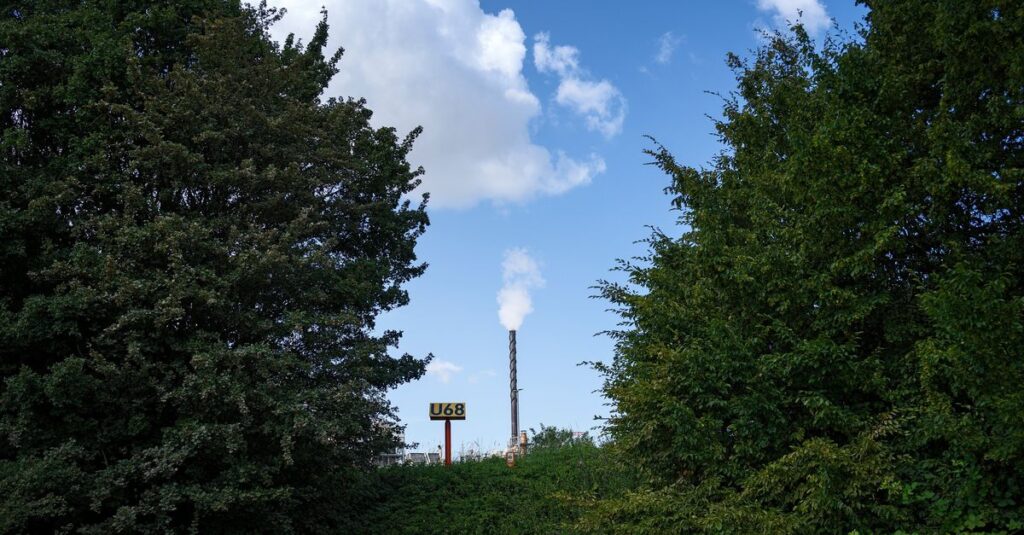The Netherlands must measure people’s exposure to chemicals in blood and urine. The Health Council wrote this in an advice on Thursday. Without such data, it is difficult to determine to what extent people are consuming excessive doses of substances with which they come into contact every day, for example through household products but also food, drinking water and medicines.
“We lack a good way to check whether policy is effective and an insight into how substances accumulate in the body,” says Marianne Geleijnse, vice-chairman of the Health Council. Scientists from, for example, the RIVM now have to make do with estimates and models based on measurements in the environment, drinking water, food and incidentally in consumer products, but that produces “limited data”. At most, measurements in humans now take place occasionally after social unrest, for example around polluting factories such as PFAS producer Chemours in Dordrecht.
Geleijnse hopes to gain insight not only into the health damage of known contaminants such as PFAS and lead, but also into “cumulative exposure”. Individual chemicals are sometimes known to be harmful, and a combination of many substances can also cause health damage in the human body. In the long term, a measurement program can provide insight into harmful combinations. In addition, there are specific risk groups for which there is little insight, such as residents of specific neighborhoods, children or pregnant women. The RIVM estimates that chemical exposure at work leads to a reduction of 90,000 healthy life years, but the precise burden of disease is difficult to determine.
Big hole
Molecular epidemiologist Jelle Vlaanderen from Utrecht University is “very positive” about the Health Council’s advice. “There is currently nothing to map chemical exposure in the Netherlands. There is a big gap in our knowledge. A huge amount of chemicals are produced, but we do not know in what concentrations people are exposed. And whether there are certain vulnerable groups that ingest a lot.”
The Netherlands previously carried out structural measurements via the GGD, but that program was discontinued in 1997. The most worrying substances at the time, especially polychlorinated biphenyls (PCBs) and dioxins, were decreasing in concentrations. The costs of structural measurements would no longer have outweighed the benefits, the government thought at the time.
Chemical production worldwide has now almost quadrupled, while supervision is weak. Within the EU, only substances in total production exceeding one tonne per year need to be registered, and companies must provide safety tests for the environment and humans. There are around 100,000 substances in use within the EU, and researchers have calculated that there are 350,000 chemicals or mixtures on the market worldwide, of which 50,000 have their precise identities confidential and 70,000 have not been properly registered. The global production volume of more than two billion tons is expected to triple again by 2050.
Effect
But what exactly does that do for health? There is no shortage of correlations: scientists see links between chemical exposure and damage to the endocrine system, cancer and infertility. But it is difficult to prove a causal relationship, not least because every person ingests a different cocktail.
Some substances in the environment have been shown to cause cancer, says Flanders. “But there are many substances that we know nothing about. That is the biggest knowledge gap now, and that is what worries me most.” In addition, according to Flanders, it is hardly possible to go a step further: to identify combinations of substances that together are harmful. Using new statistical methods, structural measurements and epidemiological data, he hopes to detect combinations of substances that together are harmful.
“Together with the United States and Germany, the Netherlands used to be a leader in the field of monitoring the exposure of citizens to chemical substances,” the Health Council writes in its advice. “However, the Netherlands has gone against the international trend.”
A spokesperson for outgoing Minister Pia Dijkstra (Medical Care) tells ANP that she first wants to study the advice before responding to it. She expects to be able to do this after the House of Representatives returns from the summer holidays. Health Council vice-chairman Geleijnse expects that, after successes abroad, the advice will now be seriously considered.
